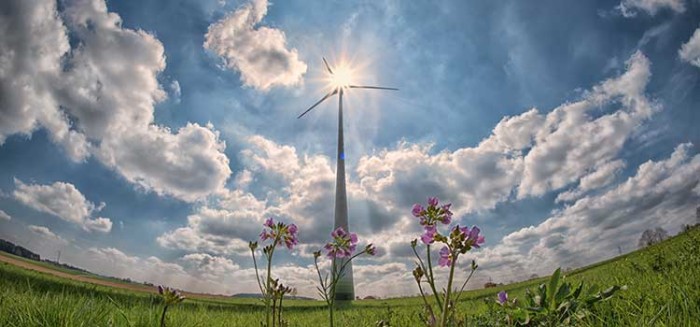Wind Industry Adding Jobs, Economic Development to Rural America
 | Isak Kvam, Communications / Policy Associate |

 | Isak Kvam, Communications / Policy Associate |
If you tune into the news these days, you might be surprised to learn that there is one thing both sides of the aisle are supporting: wind energy. That’s because wind energy generates more than just low-cost, clean, renewable energy. It is investing billions of dollars and generating economic growth for rural districts across the country, no matter the districts’ political leanings. The U.S. wind industry is supplying rural America with much-needed jobs and new county tax revenue to support the local economy when it needs it most.
For example, Texas is a leader in the wind industry, supplying more wind energy production than any other state. According to a recent article in Inside Climate News, wind turbines dot Nolan County’s ranches on the horizon, interspersed among old oil wells. Thirty-nine-year-old James Beall grew up in this area of endless, dusty acres. His dad is a veteran and found work in the oil and gas industries after Vietnam, but made James promise never to work in them after the damage it cost his back and later his leg. James struggled to provide for his newborn son as an electrician while his wife made better money waitressing at the local steakhouse serving the new wind technicians. As turbines began sprouting across the landscape, it struck James to get in on the long-term, well-paying jobs these technicians had found.
James enrolled in the local Texas State Technical College to become a certified wind technician, and today is a teacher in the program. “The wind industry has changed my life, and it’s changed it for the better,” James said. “[I]t’s up to you to change your life and do what you need to do to be a better person. Wind helped me do that.”
James is one of hundreds of thousands of Americans in the wind industry. The industry has jobs ranging from technicians scaling and servicing wind turbines, manufacturing positions to make the more than 8,000 components in one wind turbine, and construction crews that pour concrete and erect turbines. Because 99 percent of wind projects are located in rural America, the industry is pouring money and adding jobs in areas that need them most. In fact, wind projects do more than just provide new jobs.
When a wind project is built, it adds new tax revenue that local counties and townships can use to fund new or existing projects and help hold the line on property taxes. Oklahoma state Sen. A.J. Griffin lauded wind energy earlier this month for the economic development it is bringing to Oklahoman communities. “Increased tax revenue means more reliable funding for local institutions and schools. With an expanded budget, schools can invest in quality resources and technology, giving each child the opportunity to reach their full potential,” Griffin wrote in The Oklahoman. While rural America faces economic struggles, wind is walking the talk of improving communities across the nation.
Mower County in Minnesota is another example of how the wind industry is reinvesting in rural communities. Mower County is home to the most wind energy in the state, and its constituents are proud of it. Mower County commissioner Tim Gabrielson stated: “[t]his last year, the county board committed $400,000 of the county portion of revenue from the wind energy production tax toward improving roads and bridges. We’ve used the remainder [$1.9 million] as a tax relief for citizens.” Wind’s community benefits speak for itself.
There are millions of Americans who are living near wind farms and reaping their benefits, and it’s a story that can’t be told enough: Wind power supports rural America when it needs it most by providing real benefits for real, hard-working people.
This blog post originally appeared in Morning Consult.